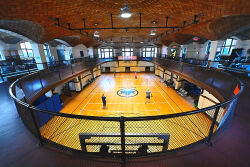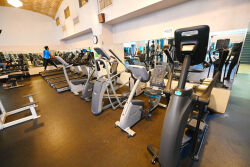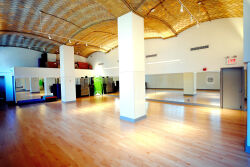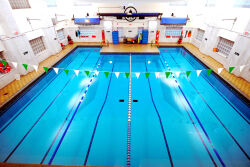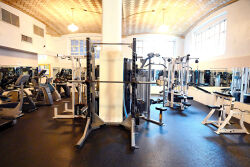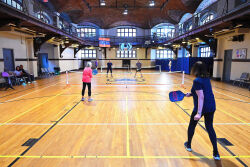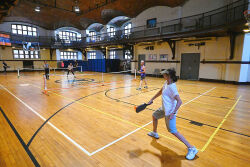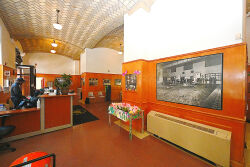Constance Baker Motley Recreation Center
Constance Baker Motley Recreation Center
What was here before?
Originally known as the East 54th Street Public Baths and Gymnasium, plans for the center began in 1904 and the lot was purchased in 1906. Bathhouses were built in overcrowded working-class tenement districts for public hygiene and recreation after the state issued a legislative mandate in 1895.
The Classical Revival-style building with a colonnaded brick façade designed by Werner & Windolph opened in 1911 as a public bathhouse with 79 showers for men and 59 for women, as well as a gymnasium. Swimming areas for each gender debuted at this center in 1915 and were open for adults from September to May and for children during the summer. It also had a playground on the building's roof which no longer exists but accounts for the curved fence along the building's roofline.
How did this site become a recreation center?
In 1915 NYC Parks was given jurisdiction over the gymnasium on the upper floor of the three-story building and controlled the entire facility by 1938. Today, the recreation center hosts basketball tournaments, volleyball games, and classes in the fitness room, and swimming in its one pool.
In 2011 the building was designated as a New York City Landmark since it retains most of its original structure and character, including marble walls from the original baths in the locker rooms. Other classical details include two wrought ironwork spiral staircases that connect the basketball court and banked jogging track and vaulted Guastavino tile ceilings in the lobby, gymnasium, and dance studio.
Who is this recreation center named for?
Known as Recreation Center 54 since 1998, in 2021, as part of the second phase of NYC Parks' initiative to expand the representation of African Americans honored in parks, this complex was named for Constance Baker Motley (1921-2005), civil rights advocate, judge, state senator and Manhattan Borough President.
Motley was born in New Haven, Connecticut in 1921 to parents from the Caribbean Island of Nevis. In high school she joined several youth and community organizations, foreshadowing her lifelong dedication to advocacy. Motley graduated from New York University in 1943 and received her law degree from Columbia University in 1946. During her second year at Columbia she clerked for Thurgood Marshall (1908-1993), then chief counsel for the NAACP Legal Defense and Education Fund. Motley ultimately became the organization's principal trial attorney.
As the NAACP's top legal strategist, she fought to desegregate schools, transportation, and businesses. She was the first Black woman to argue in front of the Supreme Court and won nine out of ten cases before the high court. Motley assisted on an additional 60 cases that reached the court, which included drafting the legal brief for the landmark case Brown vs. the Board of Education.
In 1964 she was the first Black woman elected to the New York State Senate, where she advocated for housing equality until she resigned her seat in 1965 when she was elected Manhattan Borough President, the first woman to hold the role.
The following year President Lyndon B. Johnson (1908-1973) nominated Motley to the Federal District Court of the Southern District of New York, making her the first Black woman on the federal judiciary. Motley was promoted to Chief Judge in 1986 and reached senior status in 1986, a position she held until her death in 2005. The renaming of this recreation center is one of the many accolades Constance Baker Motley has received for her dedication to the civil rights movement and her advancements in the civic and legal professions.
Check out your park's Vital Signs
Clean & Safe
Green & Resilient
Empowered & Engaged Users
Share your feedback or learn more about how this park is part of a
Vital Park System

